-

新人教版高中英语选修2Unit 3 Reading for writing教学设计
The theme of this part is to write an article about healthy diet. Through reading and writing activities, students can accumulate knowledge about healthy diet, deepen their understanding of the theme of healthy diet, and reflect on their own eating habits. This text describes the basic principles of healthy diet. The author uses data analysis, definition, comparison, examples and other methods. It also provides a demonstration of the use of conjunctions, which provides important information reference for students to complete the next collaborative task, writing skills, vivid language materials and expressions.1. Teach Ss to learn and skillfully use the new words learned from the text.2. Develop students’ ability to understand, extract and summarize information.3. Guide students to understand the theme of healthy diet and reflect on their own eating habits.4. To guide students to analyze and understand the reading discourse from the aspects of theme content, writing structure, language expression, etc., 5. Enable Ss to write in combination with relevant topics and opinions, and to talk about their eating habits.1. Guide students to analyze and understand the reading discourse from the aspects of theme content, writing structure, language expression, etc.2. Enable them to write in combination with relevant topics and opinions, and to talk about their eating habits.3. Guide the students to use the cohesive words correctly, strengthen the textual cohesion, and make the expression fluent and the thinking clear.Step1: Warming upbrainstorm some healthy eating habits.1.Eat slowly.2.Don’t eat too much fat or sugar.3.Eat healthy food.4.Have a balanced diet.Step2: Read the passage and then sum up the main idea of each paragraph.

新人教版高中英语选修2Unit 4 Learning about Language教学设计
This section guides students to pay attention to the typical context of vocabulary use, helps students accumulate vocabulary around the key vocabulary of this unit, and uses the learned words and word chunks in different contexts to deeply understand their meaning and usage, so as to achieve the purpose of review and consolidation.The teaching design activities aim to guide students to pay attention to the typical context in which the target vocabulary is used, as well as the common vocabulary used in collocation, so that students can complete the sentence with correct words. In terms of vocabulary learning strategies, this unit focuses on cultivating students' ability to pay attention to collocation of words and to use word blocks to express meaning.For vocabulary learning, it is not enough just to know the meaning of a single word, but the most important thing is to master the common collocations of words, namely word blocks.Teachers should timely guide students to summarize common vocabulary collocation, such as verb and noun collocation, verb and preposition collocation, preposition and noun collocation, and so on.1. Guide students to understand and consolidate the meaning and usage of the vocabulary in the context, 2. Guide the students to use the unit topic vocabulary in a richer context3. Let the students sort out and accumulate the accumulated vocabulary, establishes the semantic connection between the vocabulary,4. Enable students to understand and master the vocabulary more effectivelyGuiding the Ss to use unit topic words and the sentence patterns in a richer context.

新人教版高中英语选修2Unit 4 Using langauge-Listening教学设计
The theme of the listening section is " talking about scenery and culture along a journey."The part is designed to further lead the students to understand Canadian natural geography and social environment, and integrated into the cultural contrast by mentioning the long train journey from Beijing to Moscow routes. On this basis, the part activates students related travel experience, lets the student serial dialogue, guides the student to explore further the pleasure and meaning of the long journey, and Chinese and foreign cultural comparison.The part also provides a framework for the continuation of the dialogue, which is designed to provide a framework for students to successfully complete their oral expressions, and to incorporate an important trading strategy to end the dialogue naturally.1. Help students to understand and master some common English idioms in the context, and experience the expression effect of English idioms.2. Guide the students to understand the identity of different people in the listening context, and finish the dialogue according to their own experience.3. Instruct the students to use appropriate language to express surprise and curiosity about space and place in the dialogue, and master the oral strategy of ending the dialogue naturally.1. Instruct students to grasp the key information and important details of the dialogue.2. Instruct students to conduct a similar talk on the relevant topic.

新人教版高中英语选修2Unit 5 Learning about Language教学设计
The purpose of this section of vocabulary exercises is to consolidate the key words in the first part of the reading text, let the students write the words according to the English definition, and focus on the detection of the meaning and spelling of the new words. The teaching design includes use English definition to explain words, which is conducive to improving students' interest in vocabulary learning, cultivating their sense of English language and thinking in English, and making students willing to use this method to better grasp the meaning of words, expand their vocabulary, and improve their ability of vocabulary application. Besides, the design offers more context including sentences and short passage for students to practice words flexibly.1. Guide students to understand and consolidate the meaning and usage of the vocabulary in the context, 2. Guide the students to use the unit topic vocabulary in a richer context3. Let the students sort out and accumulate the accumulated vocabulary, establishes the semantic connection between the vocabulary,4. Enable students to understand and master the vocabulary more effectivelyGuiding the Ss to use unit topic words and the sentence patterns in a richer context.Step1: Read the passage about chemical burns and fill in the blanks with the correct forms of the words in the box.

新人教版高中英语选修2Unit 5 Using langauge-Listening教学设计
The theme of this section is to learn how to make emergency calls. Students should learn how to make emergency calls not only in China, but also in foreign countries in English, so that they can be prepared for future situations outside the home.The emergency telephone number is a vital hotline, which should be the most clear, rapid and effective communication with the acute operator.This section helps students to understand the emergency calls in some countries and the precautions for making emergency calls. Through the study of this section, students can accumulate common expressions and sentence patterns in this context. 1.Help students accumulate emergency telephone numbers in different countries and learn more about first aid2.Guide the students to understand the contents and instructions of the telephone, grasp the characteristics of the emergency telephone and the requirements of the emergency telephone.3.Guide students to understand the first aid instructions of the operators.4.Enable Ss to make simulated emergency calls with their partners in the language they have learned1. Instruct students to grasp the key information and important details of the dialogue.2. Instruct students to conduct a similar talk on the relevant topic.Step1:Look and discuss:Match the pictures below to the medical emergencies, and then discuss the questions in groups.
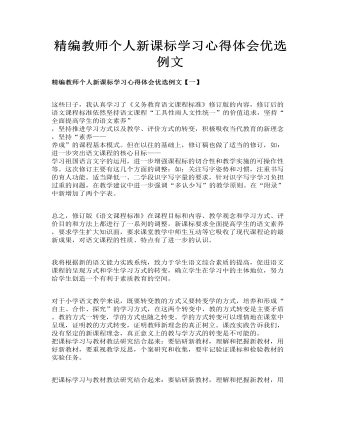
精编教师个人新课标学习心得体会优选例文
我将根据新的语文能力实践系统,致力于学生语文综合素质的提高,促进语文课程的呈现方式和学生学习方式的转变,确立学生在学习中的主体地位,努力给学生创造一个有利于素质教育的空间。 对于小学语文教学来说,既要转变教的方式又要转变学的方式,培养和形成“自主、合作、探究”的学习方式,在这两个转变中,教的方式转变是主要矛盾。教的方式一转变,学的方式也随之转变。学的方式转变可以理情地在课堂中呈现,证明教的方式转变,证明教师新理念的真正树立。课改实践告诉我们,没有坚定的新课程理念,真正意义上的教与学方式的转变是不可能的。把课标学习与教材教法研究结合起来:要钻研新教材,理解和把握新教材,用好新教材,要重视教学反思,个案研究和收集,要牢记验证课标和检验教材的实验任务。
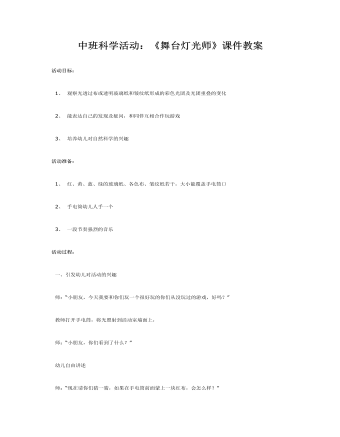
中班科学活动:《舞台灯光师》课件教案
2、 能表达自己的发现及疑问,和同伴互相合作玩游戏 3、 培养幼儿对自然科学的兴趣活动准备: 1、 红、黄、蓝、绿的玻璃纸、各色布、皱纹纸若干,大小能覆盖手电筒口 2、 手电筒幼儿人手一个 3、 一段节奏强烈的音乐活动过程: 一、引发幼儿对活动的兴趣 师:“小朋友,今天我要和你们玩一个很好玩的你们从没玩过的游戏,好吗?” 教师打开手电筒,将光照射到活动室墙面上, 师:“小朋友,你们看到了什么?” 幼儿自由讲述 师:“现在请你们猜一猜,如果在手电筒前面蒙上一块红布,会怎么样?”幼儿自由讲述

新人教版高中英语选修2Unit 2 Bridging Cultures-Discovering useful structures教学设计
The grammar of this unit is designed to review noun clauses. Sentences that use nouns in a sentence are called noun clauses. Nominal clauses can act as subject, object, predicate, appositive and other components in compound sentences. According to the above-mentioned different grammatical functions, nominal clauses are divided into subject clause, object clause, predicate clause and appositive clause. In this unit, we will review the three kinds of nominal clauses. Appositive clauses are not required to be mastered in the optional compulsory stage, so they are not involved.1. Guide the students to judge the compound sentences and determine the composition of the clauses in the sentence.2. Instruct students to try to learn grammar by generalizing grammar rules, controlling written practice, and semi-open oral output.3. Inspire the students to systematize the function and usage of noun clause1.Instruct students to try to learn grammar by generalizing grammar rules, controlling written practice, and semi-open oral output.2.Inspire the students to systematize the function and usage of noun clauseStep1: The teacher ask studetns to find out more nominal clauses from the reading passage and udnerline the nominal clauses.
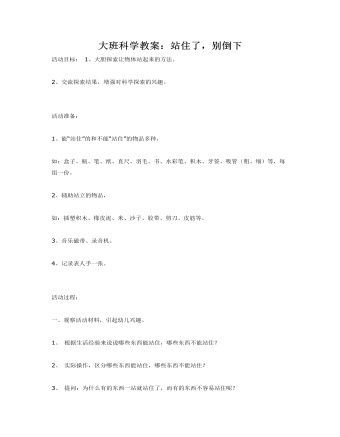
大班科学教案:站住了,别倒下
活动准备:1、能“站住”的和不能“站住”的物品多种,如:盒子、瓶、笔、纸、直尺、羽毛、书、水彩笔、积木、牙签、吸管(粗、细)等,每组一份。2、辅助站立的物品,如:插塑积木、橡皮泥、米、沙子、胶带、剪刀、皮筋等。3、音乐磁带、录音机。4、记录表人手一张。
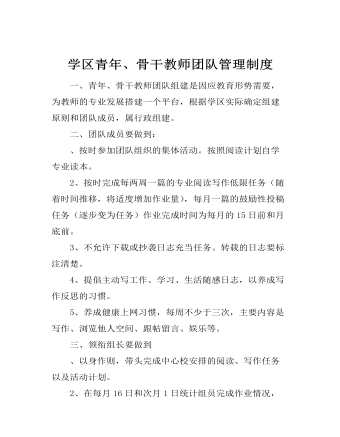
学区青年、骨干教师团队管理制度
二、团队成员要做到: 、按时参加团队组织的集体活动。按照阅读计划自学专业读本。 2、按时完成每两周一篇的专业阅读写作低限任务(随着时间推移,将适度增加作业量),每月一篇的鼓励性投稿任务(逐步变为任务)作业完成时间为每月的15日前和月底前。 3、不允许下载或抄袭日志充当任务。转载的日志要标注清楚。
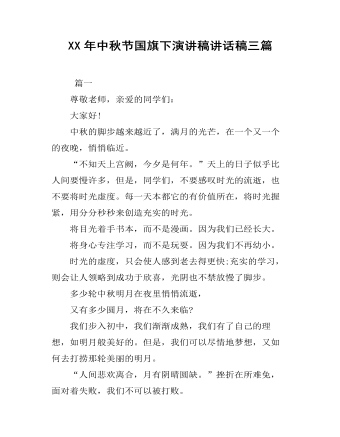
XX年中秋节国旗下演讲稿讲话稿三篇
篇一尊敬老师,亲爱的同学们:大家好!中秋的脚步越来越近了,满月的光芒,在一个又一个的夜晚,悄悄临近。“不知天上宫阙,今夕是何年。”天上的日子似乎比人间要慢许多,但是,同学们,不要感叹时光的流逝,也不要将时光虚度。每一天本都它的有价值所在,将时光握紧,用分分秒秒来创造充实的时光。将目光着手书本,而不是漫画。因为我们已经长大。将身心专注学习,而不是玩耍。因为我们不再幼小。时光的虚度,只会使人感到老去得更快;充实的学习,则会让人领略到成功于欣喜,光阴也不禁放慢了脚步。多少轮中秋明月在夜里悄悄流逝,又有多少圆月,将在不久来临?我们步入初中,我们渐渐成熟,我们有了自己的理想,如明月般美好的。但是,我们可以尽情地梦想,又如何去打捞那轮美丽的明月。“人间悲欢离合,月有阴晴圆缺。”挫折在所难免,面对着失败,我们不可以被打败。
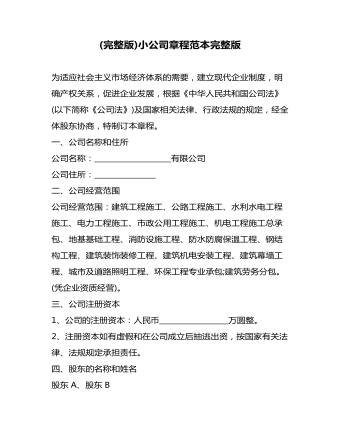
小公司章程范本
二、公司经营范围公司经营范围:建筑工程施工、公路工程施工、水利水电工程施工、电力工程施工、市政公用工程施工、机电工程施工总承包、地基基础工程、消防设施工程、防水防腐保温工程、钢结构工程、建筑装饰装修工程、建筑机电安装工程、建筑幕墙工程、城市及道路照明工程、环保工程专业承包;建筑劳务分包。(凭企业资质经营)。

大班体育活动方法多多多课件教案
2、 乐意与同伴分享交流自己的活动经验。活动准备:沙包、橡皮筋、尾巴、各色绸带、纸棒、报纸、皮球等活动流程:热身运动 自主探索运动 分享交流 活动过程: 一、 热身运动 运动员模仿操
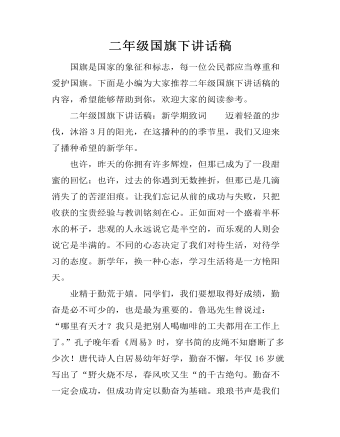
二年级国旗下讲话稿
国旗是国家的象征和标志,每一位公民都应当尊重和爱护国旗。下面是小编为大家推荐二年级国旗下讲话稿的内容,希望能够帮助到你,欢迎大家的阅读参考。二年级国旗下讲话稿:新学期致词 迈着轻盈的步伐,沐浴3月的阳光,在这播种的的季节里,我们又迎来了播种希望的新学年。也许,昨天的你拥有许多辉煌,但那已成为了一段甜蜜的回忆;也许,过去的你遇到无数挫折,但那已是几滴消失了的苦涩泪痕。让我们忘记从前的成功与失败,只把收获的宝贵经验与教训铭刻在心。正如面对一个盛着半杯水的杯子,悲观的人永远说它是半空的,而乐观的人则会说它是半满的。不同的心态决定了我们对待生活,对待学习的态度。新学年,换一种心态,学习生活将是一方艳阳天。业精于勤荒于嬉。同学们,我们要想取得好成绩,勤奋是必不可少的,也是最为重要的。鲁迅先生曾说过:“哪里有天才?我只是把别人喝咖啡的工夫都用在工作上了。”孔子晚年看《周易》时,穿书简的皮绳不知磨断了多少次!唐代诗人白居易幼年好学,勤奋不懈,年仅16岁就写出了“野火烧不尽,春风吹又生“的千古绝句。勤奋不一定会成功,但成功肯定以勤奋为基础。琅琅书声是我们献给太阳的礼赞,晶莹露珠是我们迎接日出的问候。不断追求心中的梦想,不断振奋克服困难的勇气和决心,经受风雨,勇往直前,只有这样,我们才能够响亮地回答:我们没有虚度时光。
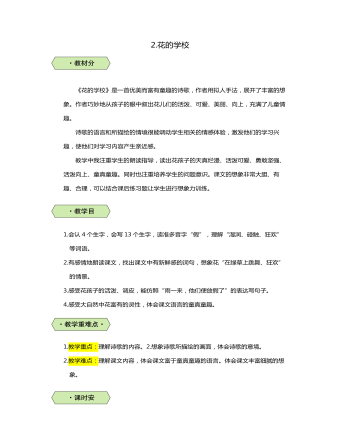
三年级语文花的学校教案
《花的学校》是一首优美而富有童趣的诗歌,作者用拟人手法,展开了丰富的想象。作者巧妙地从孩子的眼中叙出花儿们的活泼、可爱、美丽、向上,充满了儿童情趣。诗歌的语言和所描绘的情境很能调动学生相关的情感体验,激发他们的学习兴趣,使他们对学习内容产生亲近感。教学中我注重学生的朗读指导,读出花孩子的天真烂漫、活泼可爱、勇敢坚强、活泼向上、童真童趣。同时也注重培养学生的问题意识。课文的想象非常大胆、有趣、合理,可以结合课后练习题让学生进行想象力训练。
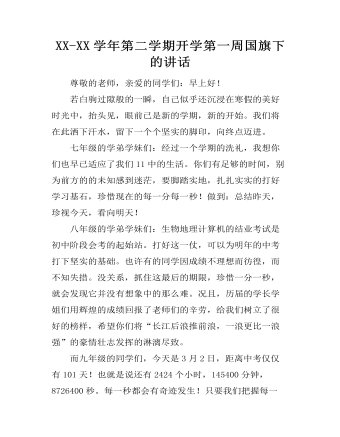
XX-XX学年第二学期开学第一周国旗下的讲话
尊敬的老师,亲爱的同学们:早上好!若白驹过隙般的一瞬,自己似乎还沉浸在寒假的美好时光中,抬头见,眼前已是新的学期,新的开始。我们将在此洒下汗水,留下一个个坚实的脚印,向终点迈进。七年级的学弟学妹们:经过一个学期的洗礼,我想你们也早已适应了我们11中的生活。你们有足够的时间,别为前方的的未知感到迷茫,要脚踏实地,扎扎实实的打好学习基石,珍惜现在的每一分每一秒!做到:总结昨天,珍视今天,看向明天!八年级的学弟学妹们:生物地理计算机的结业考试是初中阶段会考的起始站。打好这一仗,可以为明年的中考打下坚实的基础。也许有的同学因成绩不理想而彷徨,而不知失措。没关系,抓住这最后的期限,珍惜一分一秒,就会发现它并没有想象中的那么难。
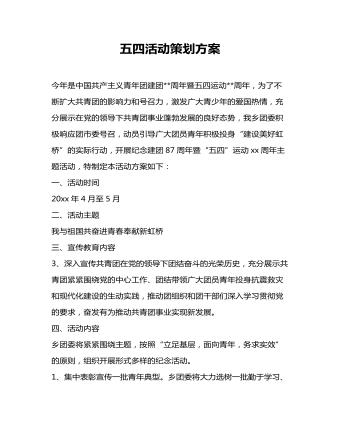
五四活动策划方案
6、开展建功立业、岗位成才活动。乡团委将通过多种形式,组织广泛开展技能培训、技术比武、岗位实践等活动,全面提升青年素质,提高青年科技创新能力,以增加青年就业创业机会;切实加强农村基层团组织建设,努力提高服务大局、服务青年的能力和水平。
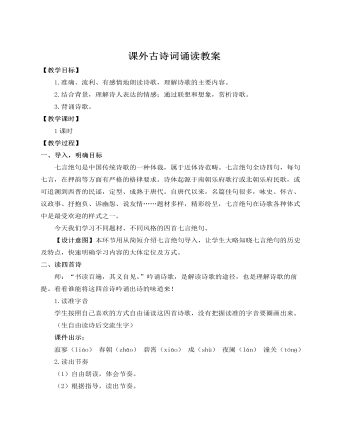
人教部编版七年级语文上册课外古诗词诵读(二)教案
材料二:锦瑟无端五十弦,一弦一柱思华年。庄生晓梦迷蝴蝶,望帝春心托杜鹃。沧海月明珠有泪,蓝田日暖玉生烟。此情可待成追忆?只是当时已惘然。(李商隐《锦瑟》)相见时难别亦难,东风无力百花残。春蚕到死丝方尽,蜡炬成灰泪始干。晓镜但愁云鬓改,夜吟应觉月光寒。蓬山此去无多路,青鸟殷勤为探看。(李商隐《无题》)材料三:《十一月四日风雨大作》(其二)作于南宋光宗绍熙三年(1192)十一月四日。陆游自南宋孝宗淳熙十六年(1189)罢官后,闲居家乡山阴农村。当时诗人已经68岁,虽然年迈,但爱国热情丝毫未减,日夜惦念报效国家,可诗人收复国土的强烈愿望,在现实中已不可能实现,于是,在一个“风雨大作”的夜里,诗人触景生情,由情生思,在梦中实现了自己金戈铁马驰骋中原的愿望。死去元知万事空,但悲不见九州同。王师北定中原日,家祭无忘告乃翁。(陆游《示儿》)材料四:清朝同治四年(1865),谭嗣同出生于北京宣武城,其父谭继洵时任湖北巡抚。光绪元年(1875),谭嗣同10岁时,拜浏阳著名学者欧阳中鹄为师。
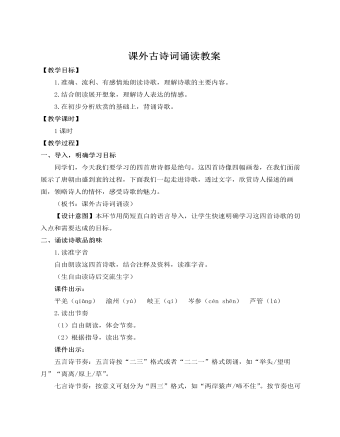
人教部编版七年级语文上册课外古诗词诵读(一)教案
(1)示例一(横向联想) 李白的送别诗:①“思君不见下渝州”,表达依依惜别的无限情思,可谓语短情长。②“仍怜故乡水,万里送行舟”,意思是“我”还是怜爱故乡的水,流过万里送“我”远行。这一句运用了拟人的修辞手法,将故乡水拟人化,借写故乡水有情,不远万里,依依不舍送“我”远别故乡,表达了诗人离开故乡时依依不舍、思念故乡的感情。③“孤帆远影碧空尽,唯见长江天际流。”这两句看起来似乎是写景,但在写景中包含着一个充满诗意的细节。李白一直把朋友送上船,船已经扬帆而去,而他还在江边目送远去的船帆。李白望着帆影,一直看到帆影逐渐模糊,消失在碧空的尽头,可见目送时间之长。帆影已经消失了,然而李白还在翘首凝望,这才注意到一江春水,在浩浩荡荡地流向远远的水天交接之处。“唯见长江天际流”,是眼前景象,可是谁又能说是单纯地写景呢?李白对朋友的一片深情,李白的向往,不正体现在这富有诗意的神驰目注之中吗?诗人的心潮起伏,不正像那浩浩东去的一江春水吗?
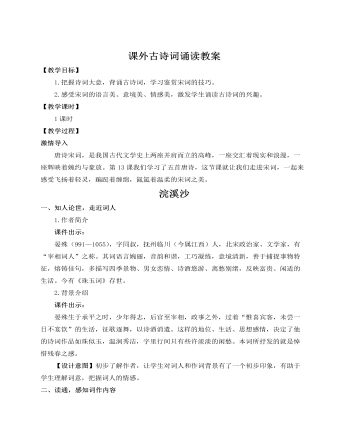
人教部编版语文八年级上册课外古诗词诵读教案
三、品读,感悟词人情怀1.品读“醉”意设问1:再次默读词作。想一想:这首词是围绕哪一个字来写的?从哪些地方可以看出来?预设 “醉”字。表现:沉醉不知归路;误入藕花深处。设问2:词人因何而“醉”?预设 因美酒和美景而“醉”。设问3:除了美景、美酒,还有什么会让李清照“醉”?预设 还有词人和自己的伙伴在一起的那种美好情谊,对年轻时那些美好生活的回忆,都让她深深陶醉。师小结:李清照的“醉”既是酒醉更是陶醉。其实不管“兴”也好,“记”也罢,“醉”也好,还是“误”也好,作者是“字字如金”。因为“兴”所以“醉”,因为“醉”所以“误”,因为“醉”,所以常常记得。2.品字悟情设问1:如何理解两个“争渡”表达出的情感?预设 两个“争渡”,表现了主人公急于从迷途中找寻出路的焦灼心情。正是由于“争渡”,所以又“惊起一滩鸥鹭”,把停栖在沙洲上的水鸟都吓飞了。至此,词戛然而止,言尽而意未尽,耐人寻味。




